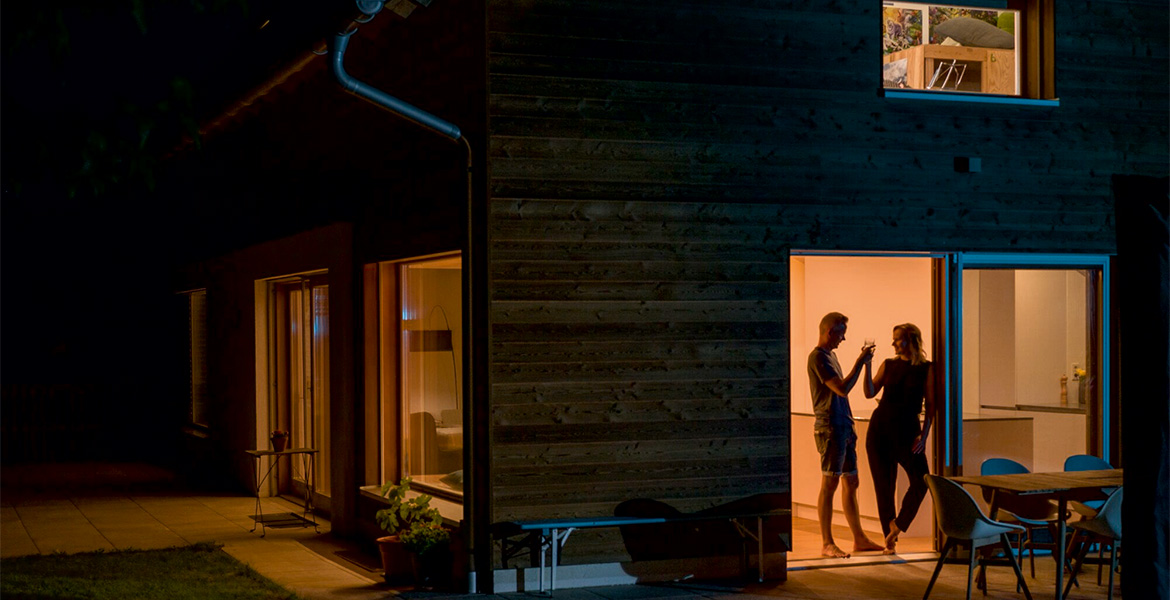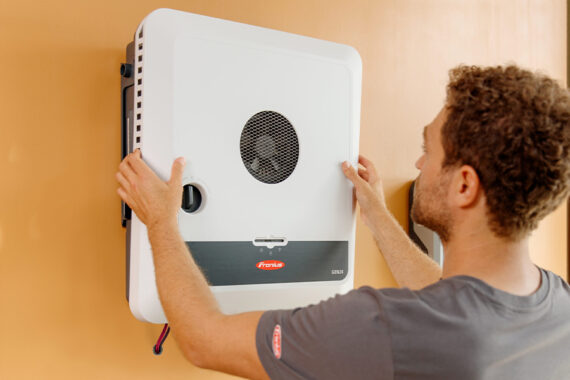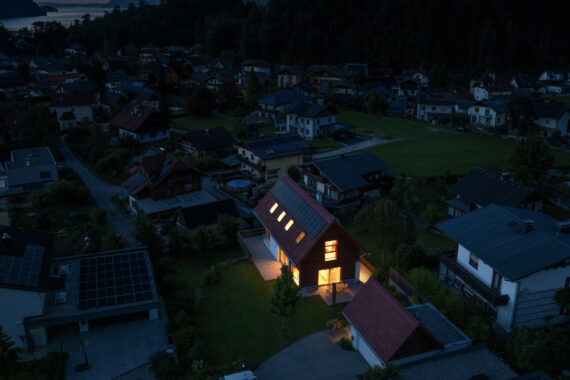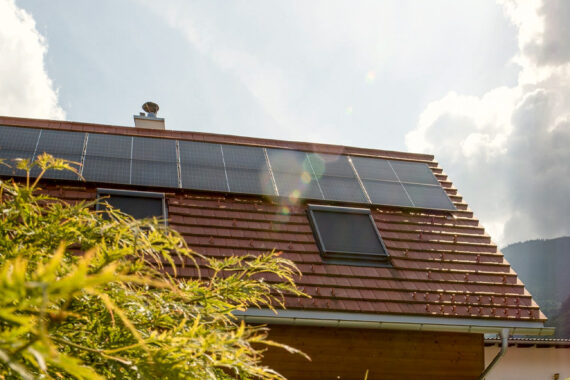When the lights go out it’s not only every second that counts, but every kilowatt hour too: a sudden power cut can happen at any time—be it due to a storm or grid overload. Understandably, for many this is a worrying scenario. So it’s reassuring to know that a photovoltaic system can do more than just feed electricity into the grid; it can even supply energy in the event of a blackout—provided it is properly equipped. Read on to learn about five essential components that will make your PV system blackout-proof and reliably supply you with electricity in the event of an emergency.
It all comes down to the right preparation
A well thought-out backup power concept is the ideal way to prepare for a blackout. Most photovoltaic systems stop operating during a power outage or grid failure. However, a PV system with a backup power-capable inverter already provides basic backup—even without a battery and if the PV system is disconnected from the grid.
But what exactly is a blackout? Take a look at this blog post to find out. Happy reading!
For a full backup of your energy system that can also cope with longer-lasting grid outages, additional components are required alongside a battery storage system. From the basic backup power supply to a full backup for supplying the entire household, suitable backup power solutions are available for every application:
1. Backup power socket—for straightforward dependability
During a power outage, selected single-phase loads (up to 3kW) can be supplied with energy via a fused socket or a fused circuit provided the sun is shining. This backup power socket, known as a PV Point, has no need of a battery at all, making it ideal for operating the most important loads such as routers, refrigerators or cell phone chargers. All Fronius GEN24 and GEN24 Plus inverters are PV Point-capable, which means that they can be used to implement this type of basic backup power supply.
If you want even more convenience, install the PV Point Comfort. This additional PC board ensures that the PV Point is supplied not only in backup power mode, but also in normal mode—thereby guaranteeing a permanent power supply for important loads. As an accessory, it can also be easily retrofitted into all Fronius GEN24 and GEN24 Plus inverters, allowing you to decide which specific loads should be supplied in an emergency—such as lights, the freezer or medical devices.
Important: This solution does not supply your entire house, but only a defined circuit. Nevertheless, it’s often crucial to operate a few essential appliances during a power failure!

2. Manual grid disconnection with backup power switching device
A backup power switching device is not only physically essential for ensuring that your home can continue to be supplied with electricity in backup power mode, it’s also a cost-efficient backup power option for those households that deliberately want to do without an automatic solution. For backup power mode in the event of a power failure, simply manually operate the switch and the house is now supplied with power via the battery or the PV system. To switch back to normal operation as soon as the grid is available and stable again, simply press the switch again. A backup power switching device like the Fronius Backup Switch can be installed in the switch cabinet to save space. Operation requires an energy storage device and a Smart Meter.
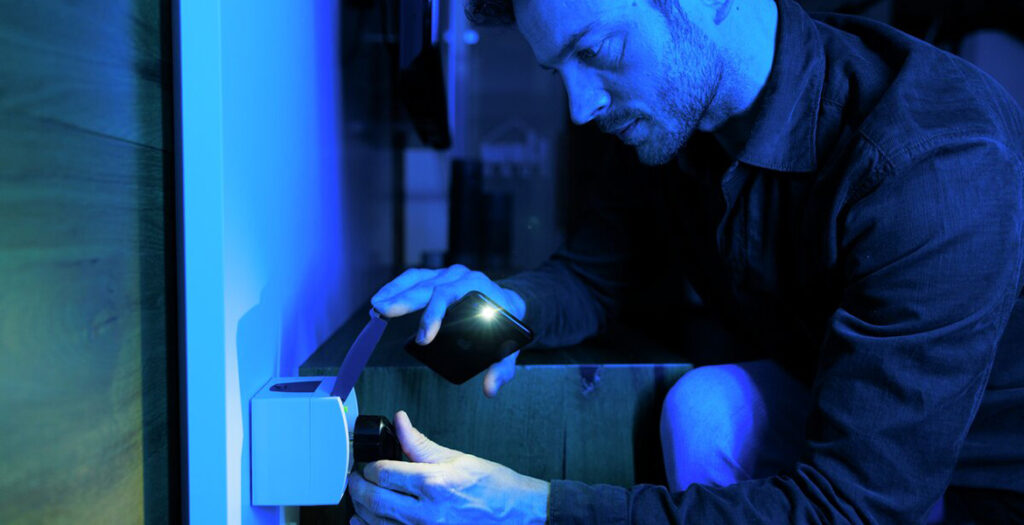
3. Automatic switching to full backup mode
If the entire household is to be automatically supplied with power in the event of a power failure and all loads are to remain active—i.e. for a so-called full backup—an automatic switching device is required to disconnect the power supply. This device quickly detects a blackout and switches to alternative power sources (battery, photovoltaic) autonomously. As soon as the grid is available again, the backup controller automatically switches back to parallel grid operation without any manual intervention.
The most common solutions for automatic grid disconnection include switchover boxes, backup controllers, and transfer switches—they cover different requirements depending on the complexity and size of the PV system. While switchover boxes usually simply switch between grid and stand-alone operation in the event of a power failure, backup controllers often also take over the control and coordination of energy flows in conjunction with battery storage systems or inverters. Transfer switches are used for larger and more powerful systems, e.g. for critical infrastructures.
Conclusion: With an automatic switching unit like the Fronius Backup Controller, your entire household is always supplied with energy, even when you are away—for unbeatable independence and security.
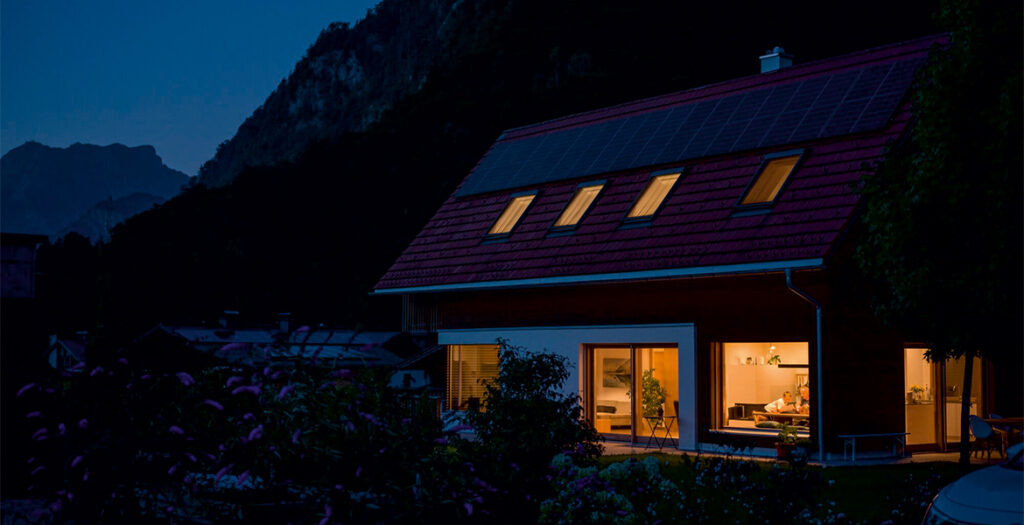
4. Solar battery—a dependable energy reserve
A battery system stores surplus solar energy for use at nighttime, on cloudy days or in the event of a power cut. With an efficient combination of inverter and battery, every photovoltaic system owner becomes even more independent of the grid. Modern storage systems can also be intelligently controlled and (dis)charged cost-effectively at certain times of the day and night, which in turn has a positive effect on the personal household budget.
But note: not every battery is automatically blackout-capable! Only models with backup power function and solar re-charging in stand-alone operation are suitable.
What does this mean? In general, solar re-charging in stand-alone operation means that a battery can also be charged by a photovoltaic system without a grid connection. This function is particularly useful during power outages or in remote regions without a stable grid.
In addition to a backup power-capable, compatible inverter, the system requirements also include a smart meter and the corresponding connection and software. DC coupling of the battery allows the electricity generated to be charged directly from the PV modules into the battery without detours via the AC circuit—this is a highly efficient and low-loss process.
When selecting your battery, it’s therefore well worth paying attention to compatibility with your inverter, the capacity, and the charging and discharging performance. Your electrician will be happy to advise you. And don’t forget another important feature of your battery: black start capability. This brings us on to point 5.

5. Black start capability—restarting without the grid, using the power of the sun
What if the power drops out at night and, worse still, the battery is also flat? This is when so-called black start capability comes into play—the unsung hero in a prolonged blackout. Many systems can only be restarted externally once the power grid has stabilized. Only a black-start capable system is able to start up again automatically as soon as the first rays of sunlight begin to fall on the PV modules the next morning—without any grid support.
This function is particularly important where there’s a need to be prepared for unexpected crises, when operating in remote locations, and with energy self-sufficient buildings. Not all solar inverters or batteries are currently black-start capable. To be truly self-sufficient in your own home, it’s therefore important to consider this unique feature when making a purchase decision. Did you know? Fronius inverters (such as the GEN24 Plus or the Verto Plus) and the Fronius Reserva high-voltage battery are all black-start capable.

–
How black start (also known as “dark start”) works:
| 1. Complete power failure (blackout) |
| Grid current fails, the PV system produces no current (e.g., at night or when the sky is very cloudy). Battery is flat or the system is completely shut down. |
| 2. System detects a “total failure” |
| All loads are disconnected. The inverter and battery are in standby or safety mode. |
| 3. Manual start pulse (dark start) |
| A button or switch on the battery (e.g., on the Fronius Reserva) is pressed manually to activate the system. The battery supplies a small amount of residual energy to start the inverter and the control electronics. |
| 4. Stand-alone grid is established |
| The inverter establishes a stable stand-alone grid (230 V/50 Hz or 400 V/3-phase). Loads can be supplied again. |
| 5. Photovoltaic system starts to work (in daylight) |
| The PV system starts up as soon as sunlight is available. The electricity generated is first used for actual consumption and then for charging the battery. |
| 6. System continues to run autonomously |
| The system remains in stand-alone operation until the public grid is available again. It can then switch back to parallel grid operation automatically or manually. |
–
Conclusion: With a bit of help from you, your PV system can reveal its superpowers
A PV system alone is not enough to protect you in the event of a blackout; only with the right additional components does it become a real backup power solution. Whether you opt for a basic backup power supply, such as the PV Point backup power socket, or an automatic full backup for the entire household is of course up to you. The possibilities are many and varied, and can be individually adapted to your needs and budget—especially with products and solutions from Fronius; even retrofitting an existing system is uncomplicated and provides security.
It’s important that you implement your personal backup power concept for your home early on, so that your systems don’t go dark during a blackout.
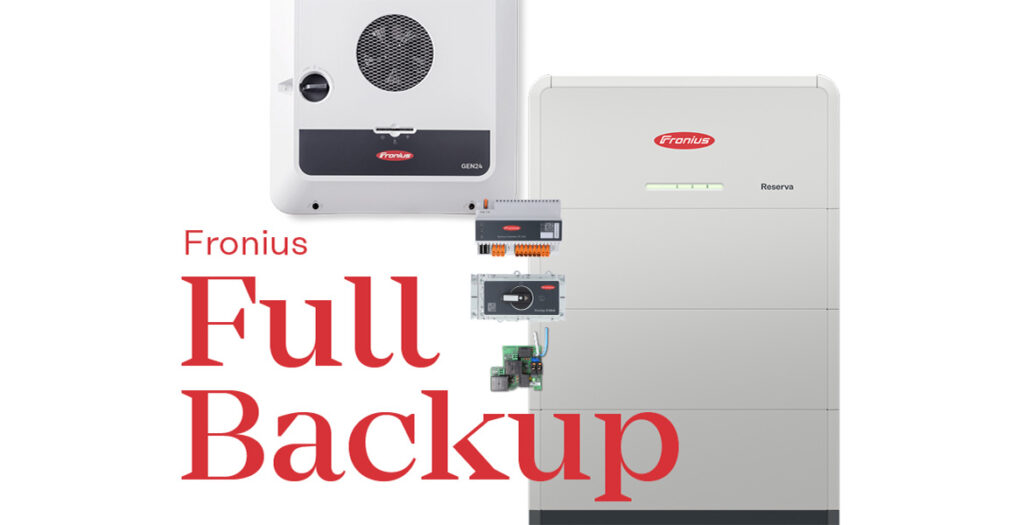
–

